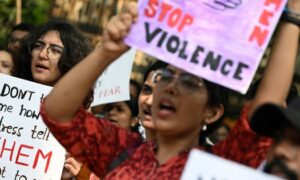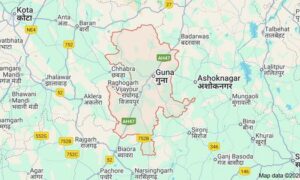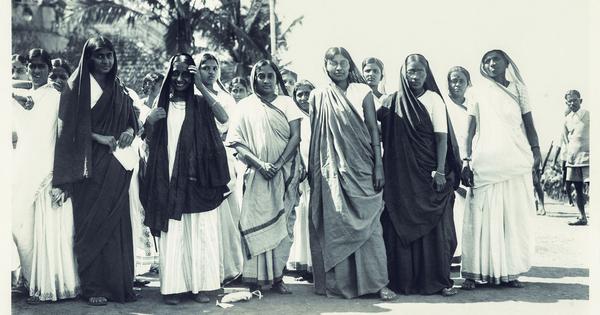
On 26 October 1930, when the Civil Disobedience Movement was at its crescendo, the Bombay War Council, the team of senior Congress leaders developing and implementing strategies for satyagraha, attempted to hold a flag salutation ceremony at the Azad (“Free”) Maidan, formerly a part of the Esplanade of Bombay, renamed so by the nationalists. After a group of male demonstrators were arrested, a group of women activists from the Desh Sevika Sangh entered the fray. They resisted all attempts by the police to seize their flags and stood their ground in spite of a lathi charge. A few women were arrested, but the rest were bundled into a police van, and dropped off at Ghatkopar, about 15 miles (nearly 24 km) away, in the Bombay Suburban District.
Implicit in this action was the assumption that the suburbs of Bombay were unlikely sites of protest; the suburbs neither had the monumental setting which the city of Bombay could provide in plenty, nor could they command the audiences necessary to render protests meaningful. And by temporarily exiling women into the suburban wilderness, the colonial regime assumed that it could thus discourage their further participation in the protests. But were these assumptions borne out by the actual situation on the ground?
Of the 245 photographs in the Nursey album, just two are captioned with locations in the suburbs of Bombay. And both of them depict women picketing the auction of toddy shop licences at Bandra in the Bombay Suburban District in July 1930. In one photograph, women with their backs to the camera are, as the caption suggests, “urging bidders not to bid for the auction,” even as a posse of lathi-bearing policemen look on. Women were at the forefront of the agitation – leading processions, picketing foreign cloth shops, hoisting Congress flags, breaking the salt laws, protesting against the evils of alcohol – all through 1930-’31. And the Nursey album features hundreds of women, many from the Bombay suburbs.
On the other hand, though these areas were significant sites of nationalist protest, they do not seem to have caught the attention of photographers. The suburban Congresswomen and their suburban protest sites have both suffered varying degrees of erasure, not just in the Nursey album but also in the larger historical narrative. And, in most cases, they haven’t merited a mention in the footnotes of history. Is it possible to imagine a nationalist historiography where some of these suburban women and their sites of protest are foregrounded? Can we, a hundred years later, map those sites of resistance which were as important to the movement as any other? And is it possible to assess the significance of these women’s contributions to a movement which was national in scale?
The suburbs of Bombay
Even before the Mahim Causeway connecting the islands of Bombay and Salsette was built in the 1840s, Bandra was a suburb from where a few people, crossing the Mahim creek on boats, commuted daily to work in Bombay. The southern parts of Salsette gradually began to assume a suburban character in the second half of the 19th century. The plague epidemic which lasted nearly two decades from 1896 and the influenza pandemic of 1918-’19 contributed to increased migration from Bombay to Salsette, especially by middle-class families. By the 1920s, quite a few urban agglomerations, planned and unplanned, had emerged in Salsette. This led to the South Salsette taluka of Thana district being designated as the Bombay Suburban District; its boundaries were largely coterminous with that of contemporary Greater Bombay.
While the municipalities of Bandra and Kurla had been in existence from the 19th century, the ones for Vile Parle-Andheri and Ghatkopar-Kirol were more recent. Mulund and Chembur, modelled after the garden cities of Letchworth and Welwyn in the vicinity of London, were still at a nascent stage and housed a few thousand people each. All these towns were connected to the city by the suburban railway network, and one could reach Victoria Terminus in less than an hour. Particularly relevant to the Civil Disobedience Movement were the salt pans which dotted the landscape of the Bombay Suburban District.
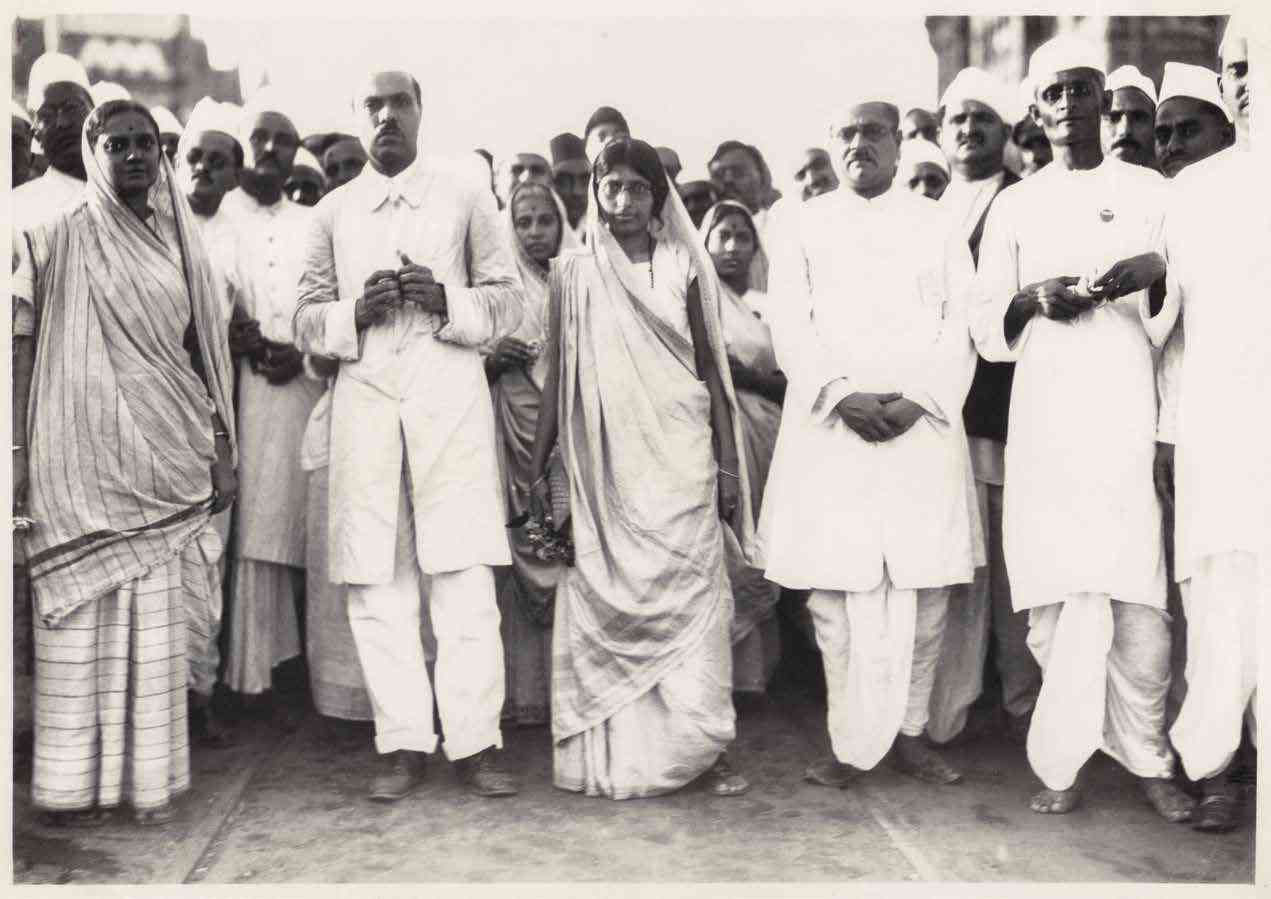
During 1930-’31, these suburban towns not only served as logistical bases for the Bombay campaigns of the Congress but also were the sites for breaking the salt laws, picketing toddy vendors and undertaking flag salutation marches and other forms of protest. Each of these suburban towns already had local Congress committees; they also formed prabhat pheri (lit., “dawn rounds”) and vanar sena (lit., “monkey brigade”) contingents. In line with the overtly military vocabulary used within the Congress to designate many aspects of the Civil Disobedience Movement, chhavanis (lit., “cantonments” or “camps”) were established in these towns.
These camps housed Congress volunteers from other parts of the Bombay Presidency who could be dispatched to Bombay at short notice for picketing and processions. The Maharashtra War Council chose Vile Parle in suburban Bombay as the site for the main chhavani; subsidiary chhavanis were set up at Ghatkopar, Bhandup, Mulund and Chembur. Each chhavani was headed by a senapati who daily conferred with the Congress House in Bombay to decide the protest strategy for the next day or week.
The first senapati of the Vile Parle chhavani was Jamnalal Bajaj, who initiated the Civil Disobedience Movement in suburban Bombay on the morning of 6 April 1930, just when Gandhi was breaking the salt laws at Dandi. The venue was the seashore at Juhu, a small island municipality connected by a causeway to Vile Parle. Volunteers from Bombay, its suburbs and adjoining districts gathered in large numbers to prepare salt by boiling seawater. As the protesters were constantly being arrested, the number of volunteers at the chhavani kept fluctuating.
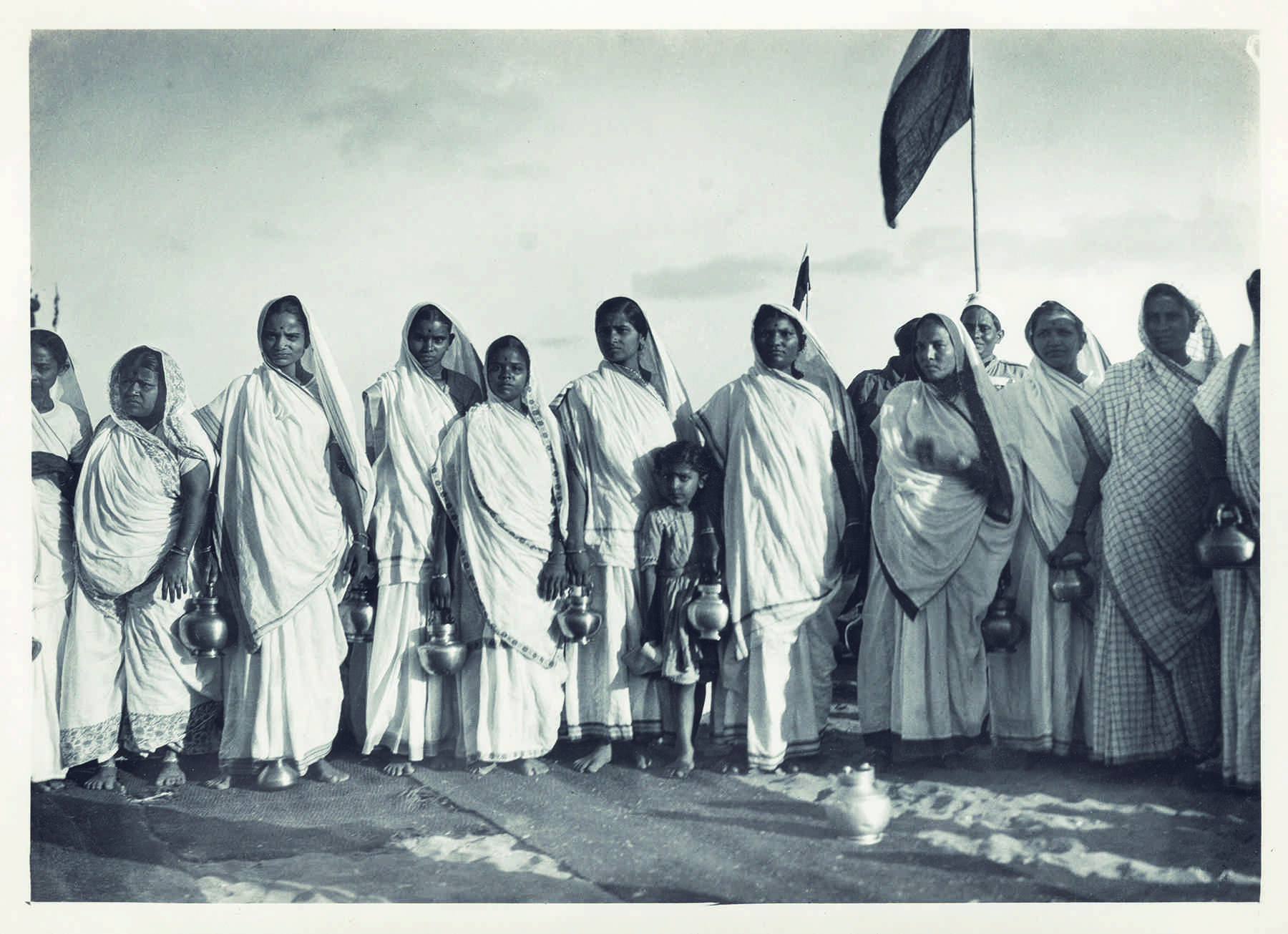
By the end of June 1930, the Vile Parle chhavani had registered 144 men and 164 women, of whom 57 stayed on the premises, including Jamnalal’s wife Janakiben and Gandhi’s wife Kasturba. The chhavani ran a hospital to treat volunteers who sustained injuries during protests, and also ran a swadeshi shop. The residents kept busy with classes on takli (spindle) and charkha spinning. By August 1930, the Vile Parle chhavani had been outlawed along with numerous other Congress institutions, and had to be dissolved. The residents set up another chhavani in the neighbourhood in a building owned by Bajaj.
On 19 October 1930, this chhavani, known as Satyagraha Chhavani, was raided along with those at Chembur and Ghatkopar. Many of the residents were arrested. Though constant efforts were made by the local police to disrupt these suburban institutions, local families, particularly through their women, continued to ensure that a Congress presence was maintained in the suburbs of Bombay. Many of these families – Chemburkar, Vileparlewala, Vandrekar – had surnames which were demonyms of Bombay suburban towns.
Excerpted with permission from Photographing Civil Disobedience: Bombay 1930-1931, edited by Avrati Bhatnagar and Sumathi Ramaswamy, Mapin Publishing.
📰 Crime Today News is proudly sponsored by DRYFRUIT & CO – A Brand by eFabby Global LLC
Design & Developed by Yes Mom Hosting


